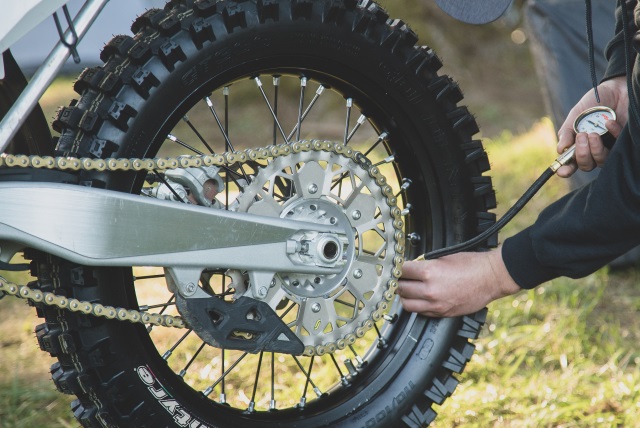
Computer techs and even at-home upgraders relish the attributes of a plug and play device because once installed the component starts right up.
Translate that to changing or upgrading parts on a dirt bike and most run as advertised, working properly as soon as the motor kicks over. However, some elements need a bit of breaking in before you rip a lap or charge into the trails. In many respects, all parts need a bit of breaking in by the rider who needs to settle into the new power, performance or handling that comes with an upgrade or replacement.
But in terms of getting a part broken in and established a few should get some practice laps before you roll the throttle.
Engine
Fresh off the factory floor, a new top end, a new bottom end - it doesn't matter the engine needs breaking in every time. You probably already knew that so the bigger question among riders ends up being "How do I break in the engine?"
Rider A has a theory and uses it. Rider B learned from his dad. Rider C heard various suggestions over the years, decided on one and stuck with it. We even wrote about it! Check out our suggestions at "Breaking Bad: How To Break in a Dirt Bike Engine" which as you'll see pretty much covers Rider A through Rider C, a few others and likely your method.
Don't forget to change the oil after that first day, too!
Brake Pads
Brake pads need seeding in to form into the shape of the rotor. You will most certainly feel the difference when adding new brake pads and even more so if you wore the old pair down to the nub. The thick new pads have extra bite compared to the old pads and by gently working them in you can expect to get long wear and excellent braking power.
Once installed, enjoy an easy ride for a few minutes gently using the new pads as needed. Don't force more stops than necessary and definitely don't "slam on the brakes" during this time. Expect the abrupt grab that comes with new brakes to ease a bit and once you get used to the improved performance the new pads are ready for prime time.
Suspension
You don't exactly ease in to a new or rebuilt suspension like the engine or brake pads instead you need some solid riding time - a few hours - to get the suspension to work properly. In this case, go for a ride and keep riding.
The shims and bushings have tighter tolerances in a new suspension that widen once broken in and the fork oil thins out after getting hot. A new suspension lacks the initial plushness that makes it comfortable and feels like you turned the clickers to the right until they stopped.
The quicker you get on the track or trail after a suspension rebuild the quicker you get dialed in. Therefore, don't expect a podium performance if you spent the night before race day rebuilding the suspension.
Wheels
Already hard as nails, why do wheels need breaking in? Wheels include the rim, hub and spokes, and brand new ones need some time to adjust.
In fact, the top reason riders have a bad experience with new wheels and immediately chalk it up to a bad set comes from maintenance and incorrect break-in. Like suspension, you don't necessarily need to ease into the new wheels while riding though we recommend it because you want to make sure the spokes remain tight.
After a few rides, some spokes settle in while others loosen. After install, set the torque to wheel manufacturer or OEM depending on your set then head out on that first ride. You need to check the torque settings on the spokes every few hours for six to eight hours of ride time before calling it good (though checking for loose spokes before every ride is good practice). You should also check for trueness.
Mechanic's Note: Use a light misting of Maxima SC1 on new rims, spokes and hub after install and dirt won't stick to them.
Sprocket and Brake Rotor Bolts
When changing sprockets or the brake rotor always include new bolts as the old ones tend to stretch and can sheer off when overused. Set the torque using OEM specifications, apply Loctite and ride a few hours. Recheck the torque and make adjustments, if necessary.
All things considered, the next time you replace a part on your dirt bike focus your attention on any subtleties and work that into your normal warm-up routine until you adjust to any changes. If you change or replace any of the parts noted above a proper warm-up and breaking in period ensures optimal performance of your machine.











